The recipe cost breakdowns are a big part of Budget Bytes. And while you’re not likely to have the exact same food costs as me (prices vary quite a bit from location to location, day to day, and even store to store), I think it’s helpful to see how each ingredient can impact the overall cost of a recipe. So now I’d like to dive a little deeper to show you how I make these calculations, and teach you how to calculate recipe costs yourself. Because even if you do it once, I promise you’ll learn a lot!
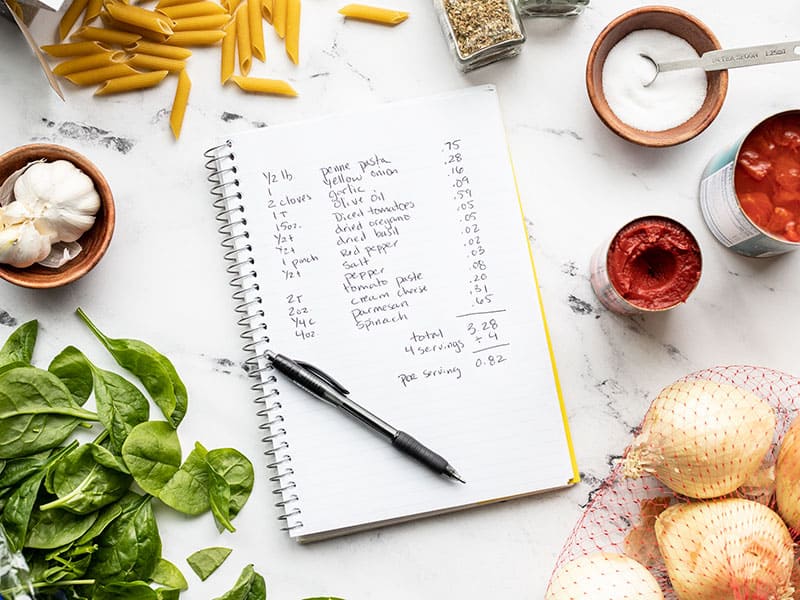
Why Calculate Recipe Costs?
My big “Ah-ha!” moment came when I calculated the cost of my first few recipes. I was always very mindful of the total amount I spent at the grocery store every week, but seeing the breakdown of each ingredient and the total recipe cost that truly revolutionized my way of cooking.
Seeing this breakdown helped me learn how to tweak recipes to make them more filling for less money, while maintaining maximum flavor. I learned that scaling back just a little on the most expensive ingredients (nuts, cheese, meat, etc.) dramatically reduced recipe costs, but didn’t have a huge impact on flavor. Likewise, I learned which inexpensive ingredients helped give my food a big flavor kick for pennies (green onions, cilantro, freshly cracked pepper, dried herbs, etc.), and which ingredients I could use to bulk up a recipe without greatly increasing the total cost (rice, pasta, beans, lentils, cabbage, carrots, potatoes, etc.).
What Method Do You Use?
Here on Budget Bytes I use the same method of calculating recipe costs used by commercial food service operations—adding the costs of each ingredient used, in the amount used, rather than adding the full price of items purchased. Some argue that you can’t just buy 2 Tbsp of olive oil, so the recipe actually costs more to make. The counter argument to that is that you don’t buy an entire bottle of olive oil every time you make a recipe, nor do I consider an ingredient “free” if I already have it in my kitchen and didn’t need to buy it for that recipe. Both methods have their caveats, but I find the method used here to be the most representative of the recipe’s true cost.
What Do I Need to Calculate the Cost of a Recipe?
The process is simple and doesn’t require a lot of time or “equipment.” It’s so simple, in fact, that I do this, by hand, for every single recipe on this website (well over 1000 recipe at this point). To calculate recipe costs you’ll need:
- Your receipts
- Original ingredient packages
- Pen and paper
- Calculator
- Grocery store website (as a backup for sourcing prices)
How To Calculate Recipe Costs – Step by Step Tutorial
Okay, so let’s walk through, step by step, what I do to calculate the cost of a recipe on Budget Bytes. For this tutorial, we’ll be using the Creamy Tomato and Spinach Pasta recipe as an example.
Step 1: Write down the recipe ingredients and quantities
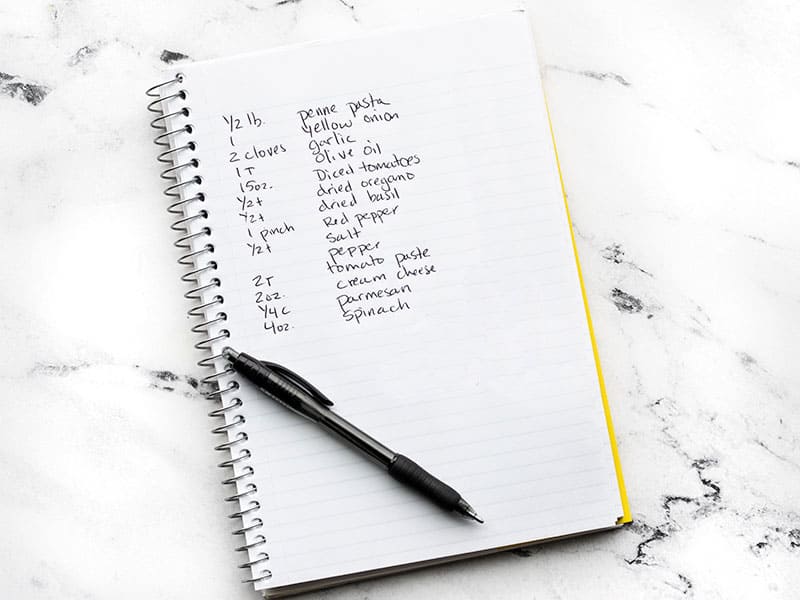
This post contains some affiliate links, which means that we make a small commission off items you purchase at no additional cost to you.
If you like to print your recipes, you can do the calculations right on the printed version of the recipe. I always do my calculations in my recipe development notebook. You’ll fill out the prices in the right hand column as you do the calculations.
Step 2: Fill in prices for ingredients that were used “whole”.
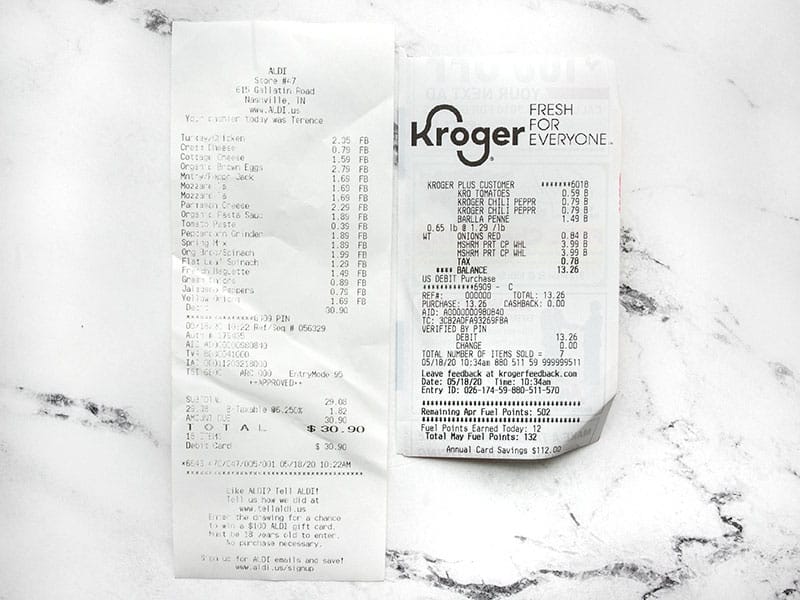
Gather your receipts and record the prices for any ingredient that you used in the “whole” form. This could be ingredients like a can of tomatoes, a cucumber, maybe a jar of pasta sauce, a single bell pepper, etc. In this Creamy Tomato and Spinach Pasta there was only one ingredient that I used in the full volume purchased—diced tomatoes. You can see this item listed as “kro tomatoes $0.59” on the Kroger receipt. Record the price next to this item on your recipe ingredient list.
Note: If you don’t have your receipts, check your grocery store’s website. Some larger stores, like Kroger, allow you to look up items online and the price will be displayed.
Step 3: Calculate Bulk Produce Items
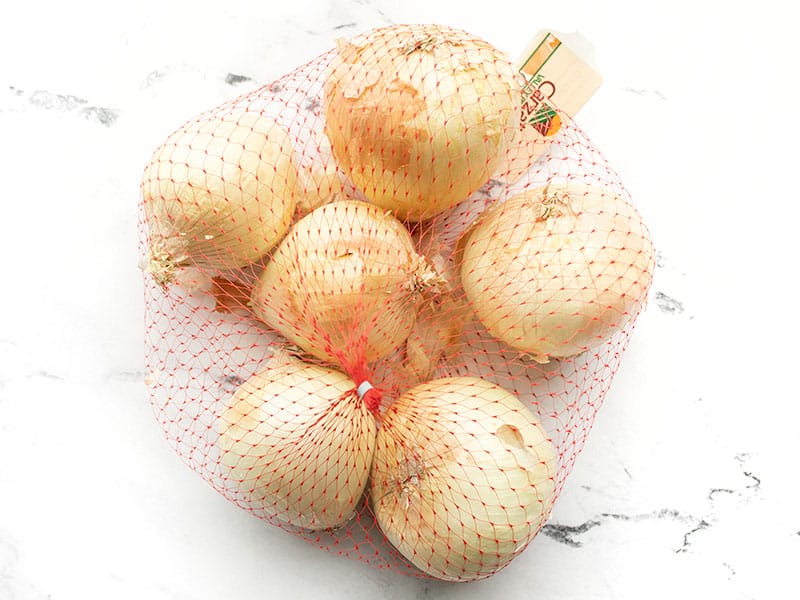
For bulk produce items, take the total price listed on the receipt and divide by the number of items purchase. The total price for this bag of yellow onions listed on the receipt was $1.69 and there are six onions in the bag, so each onion is approximately $0.28. Record this price on your recipe ingredient list.
This method works good for other bagged produce, like apples, carrots, oranges, lemons, potatoes, etc. and also things like packages of chicken thighs or breasts.
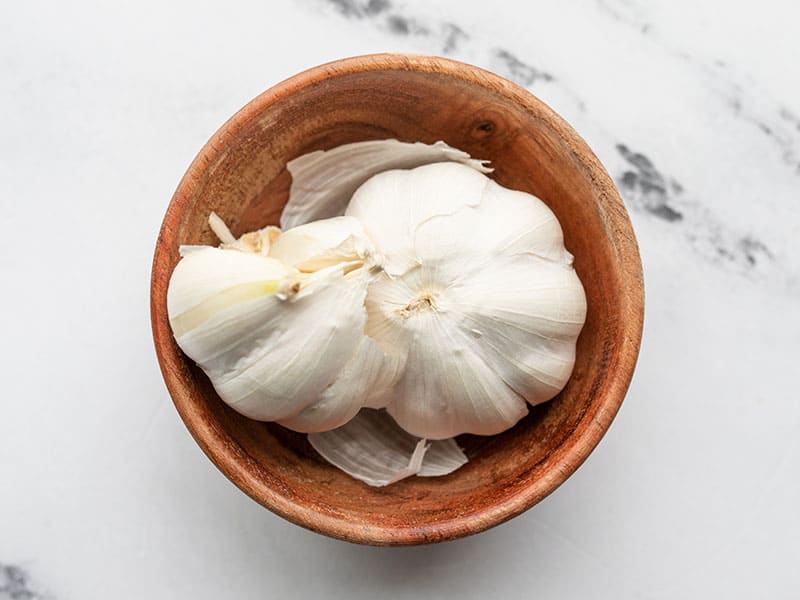
For garlic, each head is usually around $0.60-$0.65 and I get on average about 8 good sized cloves from each head, so I just estimate about $0.08 per clove.
Step 4: Use Package Labels to Calculate Partial Ingredient Costs
For most ingredients you’ll need to use the information listed on the ingredient packages to determine the cost of the amount used in the recipe. Here are some examples:
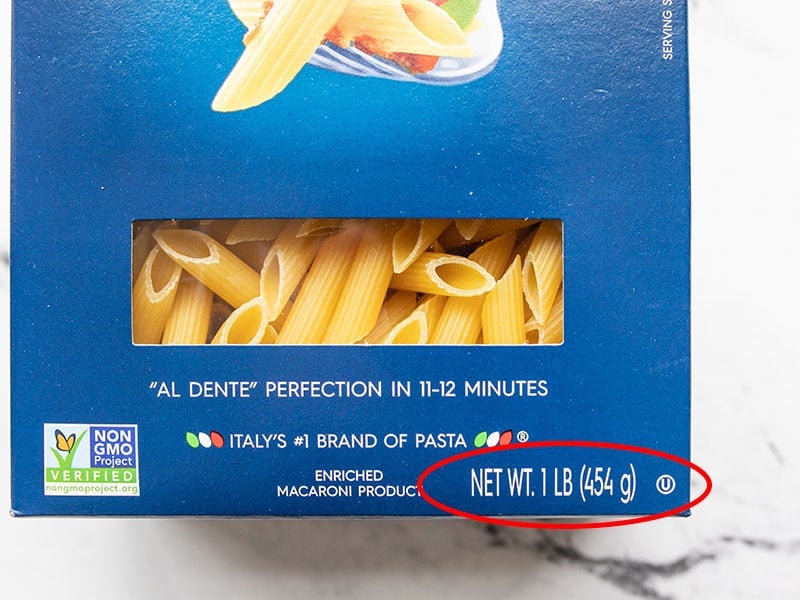
This recipe used 1/2 lb. of penne pasta. The whole box (1 lb.) cost $1.49. Since I used half the box, the cost of the amount used is $1.49 ÷ 2 = $0.75.
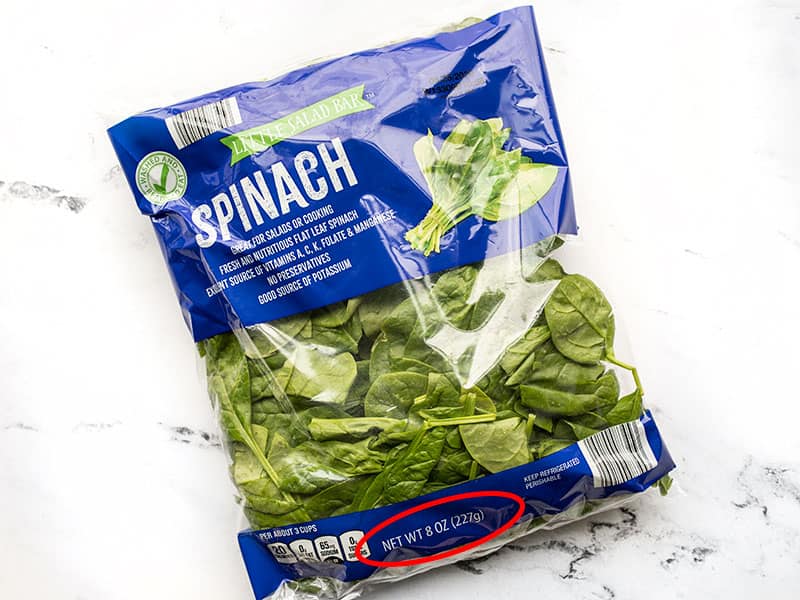
The same method was used for this bag of spinach. The full 8 oz. bag cost $1.29, so the cost of the 4 oz. used is $1.29 ÷ 2 = $0.65.
Sometimes the manufacturers are nice and provide helpful guides for measuring. This full 8 oz. package of cream cheese cost $0.79, so the cost of the 2 oz. used in the recipe is $0.79 ÷ 4 = $0.20.
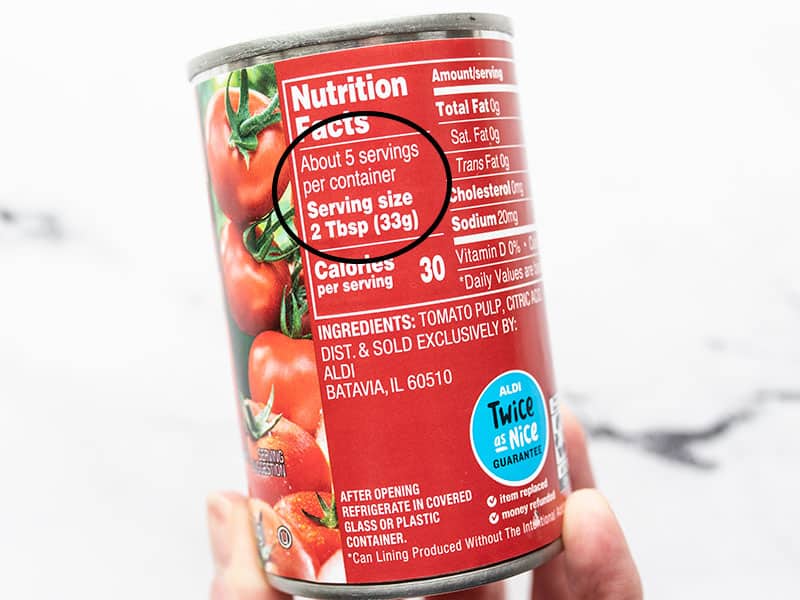
Sometimes the calculations can get a little more involved. The cost of this 6 oz. can of tomato paste was $0.39. We can see on the nutrition label that there are 5 servings of 2 Tbsp in the can, or a total of 10 Tbsp per can. We used 2 Tbsp for the recipe, so the cost of what we used is $0.39 ÷ 5 = $0.08.
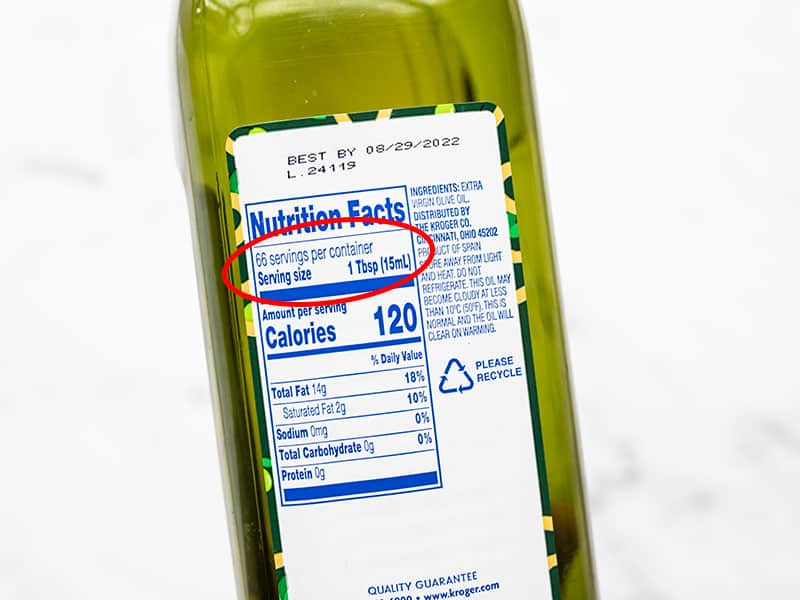
I bought this bottle of olive oil a while back, so I had to refer to Kroger.com to get the price. The total price for this bottle was $5.95. We can see on the nutrition label that there are 66 servings of 1 Tbsp in the whole bottle. We used 1 Tbsp for the recipe, so the cost of what we used is $5.95 ÷ 66 = $0.09.
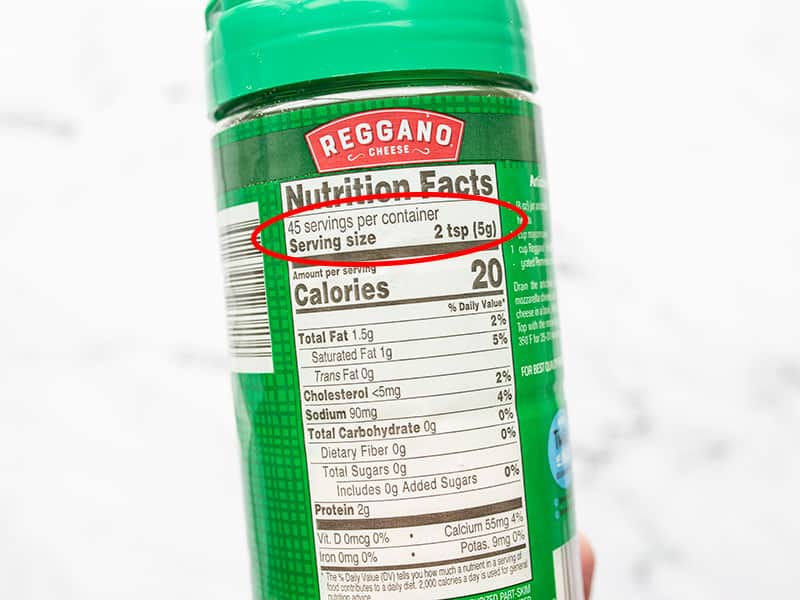
This Parmesan cheese is about as complicated as the calculations usually get because we’re converting between unit types. We see on the label that there are 45 servings of 2 tsp in the whole bottle. We used 1/4 cup in the recipe. So first I calculated the cost per tsp: $2.29 (total bottle price) ÷ 45 ÷ 2 = $0.025 per tsp. I know there are 3 tsp per tablespoon, and 4 tablespoons per 1/4 cup, so I calculated a little further: $0.025 x 3 x 4 = $0.31 per ¼ cup.
Step 5: Estimate Costs for Herbs and Spices
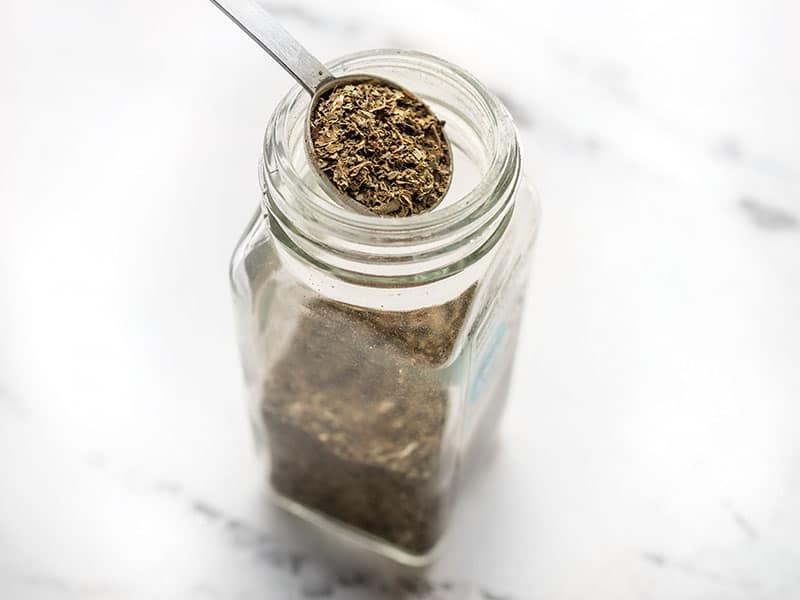
Herbs and spices don’t have nutrition labels with serving sizes to work with, and often the entire container only weighs less than 2 oz. Unfortunately I don’t have a kitchen scale that is sensitive enough to weigh something as light as a 1/2 tsp of a dry herb. So, for my purposes I use a generic (and generous) allotment of $0.10 per tsp for most dried herbs and spices. For salt and pepper I estimate a little less and for any rare herbs or spices I double the generic estimation. So, for this recipe: 1/2 tsp dried basil = $0.05, 1/2 tsp dried oregano = $0.05, 1 pinch crushed red pepper = $0.02, 1/2 tsp salt = $0.02, freshly cracked pepper = $0.03
Step 4: Add it all together!
So finally, we have all of the prices of the ingredients filled in on the recipe ingredient list. Now just simply add them all together and then divide by the number of servings and you’ve got the price per serving. So for this recipe, the total cost was $3.28 and with four servings that’s $3.28 ÷ 4 = $0.82 per serving.
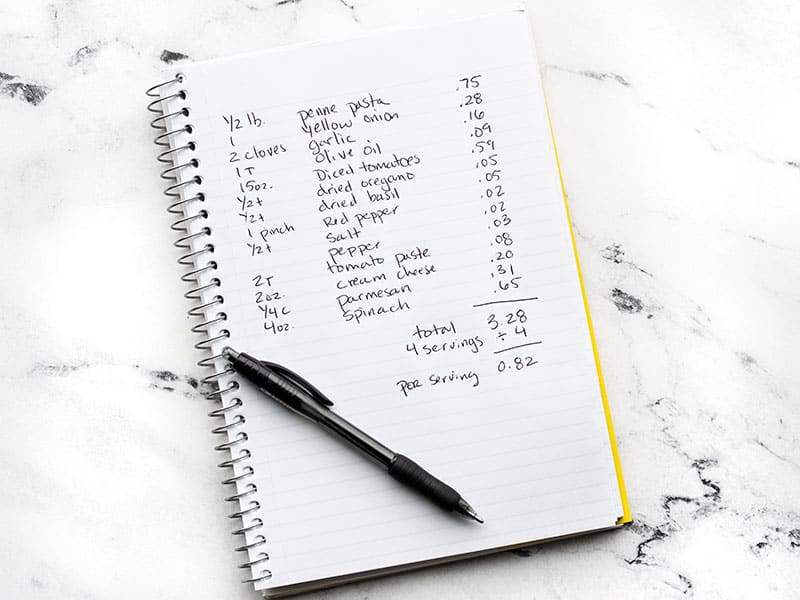
As you can see, it’s not an exact science, but it will definitely shed some light on where your money is really going. I hope you try it out at least once just to see how it goes. If you want to do it on a regular basis, you can start a spreadsheet with price per unit information for your pantry staples. This way you’ll have a record of the price for items that you may only buy a few times per year (and probably won’t have the receipt handy). Luckily, my blog acts as a “record” of these prices, so I can quickly refer back to my last purchase price.
What About Electricity, Gas, and Water?
Every now and then I get a question about how utilities add to my recipe costs. Unfortunately I don’t have a way to measure the amount and cost of the most of the utilities used in the recipes, but I’m confident that it would be a very small amount. For instance, in this recipe I used 1/2 cup water in the sauce. After checking my last water bill, I paid $0.003 per gallon of water. I round to the nearest cent for these calculations, so the cost of the 1/2 cup water in this recipe is negligible. Water is easy to measure, but I don’t think I could measure the amount of gas or electricity used to heat the oven.
Handy Conversions for Calculating:
- 3 tsp = 1 Tbsp
- 4 Tbsp = 1/4 cup
- 2 Tbsp = 1 fluid ounce
- 16 Tbsp = 1 cup
- 2 fluid ounces = 1/4 cup
- 8 fluid ounces = 1 cup
- 16 weight ounces = 1 pound
NOTE: “fluid ounces” are a volume unit, weight ounces are a measurement of mass. Solid ingredients are usually listed as weight ounces, liquid ingredients are usually listed in fluid ounces. 8 fluid ounces of one ingredient may not equal 8 weight ounces of that same ingredient. That will depend on the individual density of the ingredient. Cheese is a great example. 4 oz. (weight) of cheese is equal to about one cup (volume) of shredded cheese. One cup is 8 fluid ounces in volume, but only 4 weight ounces of shredded cheese.
Try It Yourself!
I hope I didn’t scare you off with all these calculations! It really is quite simple, especially after you do it a few times. If you’re interested in giving it a shot, start with a simple recipe that only has 3-5 ingredients and see how you do! Then, let me know how it worked out in the comments below. :)
P.S. Did you know you can browse our recipes by Cost per Recipe and Cost per Serving?


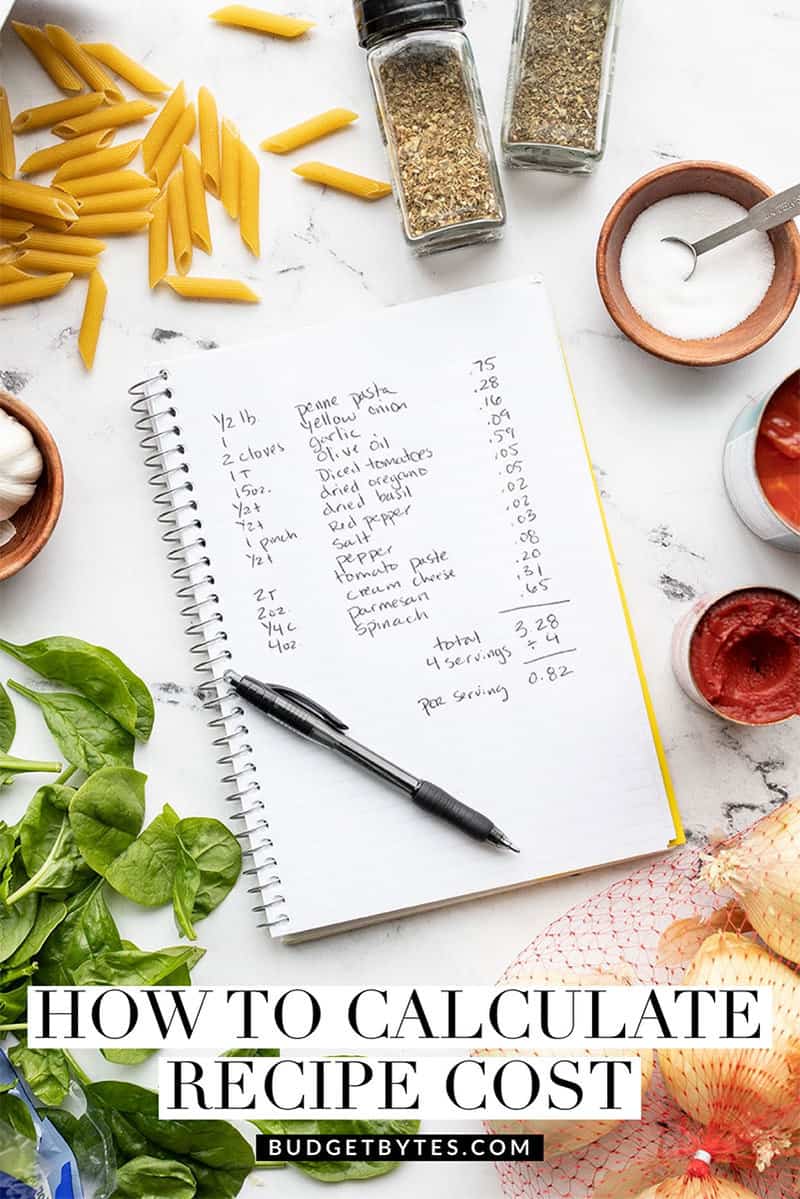
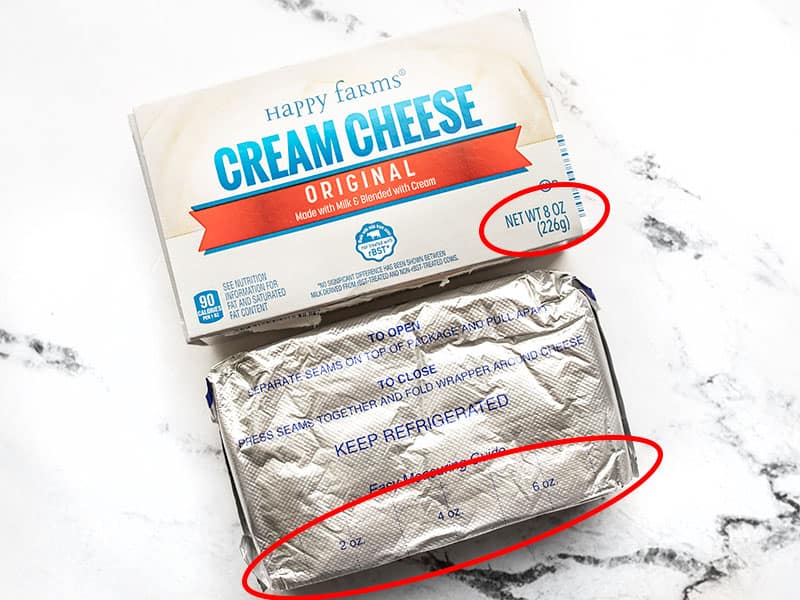
I like your method if pricing each recipes you do.very smart. I will try it on my cooking and see where my money actually go.
Thanks soo much.
Cecilia
Can one also start to calculate the cost of time?
I see this was last updated in 2020. Is it still accurate with inflation?
The method is still the same, but the numbers given will be a little off for sure. I’ll see if we can get this one updated soon!
I was laughing at some of the prices myself 😂😂😂
hi. I’m trying to start a empanada business. I have someone who has the location and wants to buy my product. I’m trying to figure out how much should I charge for them per empanada, and how to calculate it. its all confusing for me. the location is far from me and i would have to drive two hrs to deliver them. Please help. TY
Hey, Jo! I have so much advice in this area, as I used to have a wholesale food business as well! A basic wholesale food pricing formula you can use is: item cost + 20% profit margin = your wholesale cost. Some people add on 15% instead of 20%, but I always had to factor in SO MUCH TIME that I went high. So, if a product costs $1 to make, and the 20% profit margin is $0.20, the wholesale cost would be $1.20. Now, this doesn’t sound like a great profit (and honestly, it’s hard to turn a solid “worth it” profit unless you’ve got a big wholesale business), but once you gain more customers and/or people discover your empanadas which results in bigger orders (I believe in you!) you’ll see it may become worth it. Factor in your time always. (Literally, set a timer on your phone and time how long it takes you to make a dozen empanadas sometime.) Factor in your time + gas/mileage as well if you are also delivering the product. You can add that directly onto the cost of each empanada or have a separate line on your invoice that shows your delivery fee. I hope this is helpful. Some people do it differently, but this is how I have done it in the past and it turned into me opening my own restaurant here in Nashville. :) If you want to chat more about it, you can email me: jess@budgetbytes.com <3 Good luck!
i have an excel spreadsheet that i plug everything into
Item A , is X ounces and cost Y. i calculate cost per ounce and pound
use recipe, plug in ingredient 1 – needs x ounces and it calculates cost
basically same thing you do, but have spreadsheet
i can then go up / down on number of servings and calculate cost, then price to sell at.
Jack. I would love to learn more about how you did this on excel. I am working on projections for a bakery and need to calculate the cost for each item made. Is this something you could tell me more about?
Hi, what would be the best way to cost out a prep item that goes like this: 1080g of dorade fish goes into 776g of fillets and 230 g of bones. the fillets are used for the dish and the bones are used for a fish fumet? I am at a loss trying to cost this out effectively long term
I’d use the whole fish cost. Unless you’re using the bones for something else. Maybe fish broth (?).
Calculate the cost of the whole Dorade fish. Weigh the bones, head, fins, etc, and take it as a percentage of the total cost. Then use that as the cost of fish bones in your fumet/stock recipe. For example:: 11 Lbs of whole fish @ $170 including delivery & taxes; if bones, heads, fins, etc. weigh 20% that would be a cost of $34 for your fumet/stock which you have to calculate separately using on the fumet recipe..
Send me email
I’m not sure if you can help as i live in UK? I volunteer at a local group and have started making meals/cakes etc. Have been given a budget so would like to know how to produce fresh healthy meals within it. And any other tips on budgeting & any other ideas to make this a sustainable venture.
I am starting a home cook and bake business snd can use all tips and information from the experts
Please put a date at least year and area of the country where you are finding such prices. The prices your quoted are more than 10 years old not just pre-Covid but long before that locally here in Washington State the price is you quoted for the entire Recipe would not be enough for one single serving at our current prices
I was thinking the same. I just did a price calc of a casserole I made. Nothing exotic. Came to $3.75 preserving if this made 8 servings. But the servings were tiny. Was in a shallow 8×8 pan. Realistically could be 4 servings ($7.50 per) if no sides (has protein and vegetables in it) or 6 ($5 per) with a side salad or vegetable. But then you have to add that cost. Still cheaper, healthier and tastier than going out in my opinion. Only place we can go out for that price is maybe McDonald’s. I enjoy cooking. I just don’t enjoy the cleanup lol. Anyway, my ingredients here and now are waaay pricier than in this site. Even as I compare apples to apples.
I do appreciate how your mind works. Thank you for your sharing.
food cost